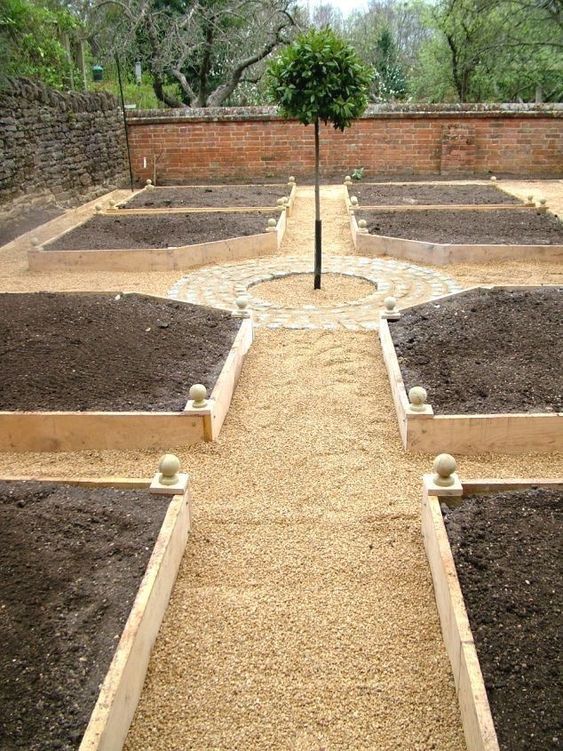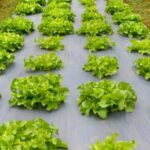Are you interested in starting a vegetable garden in Minnesota? Understanding the climate and growing conditions of your specific zone is crucial for successful gardening. In this article, we will explore everything you need to know about vegetable gardening zones in MN, focusing on zones 3 and 4. From choosing the right vegetables to soil preparation, pest management, and extending the growing season, we’ve got you covered with valuable information and helpful tips.
Minnesota’s climate can be challenging for gardeners, especially in zones 3 and 4 where the growing season is short and the temperatures can be very cold. However, with the right knowledge and techniques, it is possible to have a successful vegetable garden in these zones. By understanding your specific zone, you can choose plants that are well-suited to your area and learn how to work with the unique conditions of Minnesota’s climate.
In the following sections of this article, we will delve into helpful tips for preparing your soil, planning and designing your vegetable garden, planting and maintaining your crops, dealing with pests and diseases common in Minnesota, extending the growing season, as well as harvesting and preserving your yield. Whether you are a novice or experienced gardener, this comprehensive guide will provide you with valuable insights for vegetable gardening in Minnesota’s challenging zones 3 and 4.
Choosing the Right Vegetables for Your Zone
When it comes to vegetable gardening in Minnesota, choosing the right vegetables for your specific zone is crucial for a successful harvest. Zones 3 and 4 in Minnesota come with their own set of challenges, including shorter growing seasons and cold temperatures. However, with the right selection of vegetables, you can still enjoy a bountiful garden. Here are some of the best vegetable options for Zone 3 and 4 in Minnesota:
- Root Vegetables: Root vegetables like carrots, turnips, and beets thrive in cooler temperatures and are well-suited for Minnesota’s climate.
- Leafy Greens: Vegetables like spinach, lettuce, and kale are great options for Zone 3 and 4 as they prefer cooler weather and can withstand light frosts.
- Cruciferous Vegetables: Broccoli, cauliflower, and Brussels sprouts are hardy enough to withstand the colder temperatures in Minnesota’s zones.
It’s important to consider the length of your growing season when choosing vegetables for your garden. Some varieties have shorter maturity dates while others require a longer growing period. Additionally, selecting cold-tolerant varieties of vegetables will increase your chances of a successful harvest in Zone 3 and 4.
When planning your vegetable garden in Minnesota’s challenging zones, it’s also important to consider space and sunlight requirements for each type of vegetable. Certain vegetables may need more sunlight or room to spread out, so proper planning is essential for maximizing your garden’s potential.
Lastly, considering the potential variations in temperature within Minnesota’s zones is crucial. It is advisable to choose vegetables that can tolerate both warmer spring temperatures as well as cooler fall temperatures to ensure a successful growing season. By carefully selecting the right vegetables for your zone-specific conditions, you can set yourself up for a productive and rewarding gardening experience.
Preparing Your Soil for Successful Vegetable Gardening
Minnesota’s climate and growing conditions can pose some unique challenges when it comes to vegetable gardening. One of the most important factors for a successful garden is the quality of your soil. In zones 3 and 4 in Minnesota, it’s crucial to focus on soil preparation in order to provide the best environment for your vegetables to thrive.
One key aspect of preparing your soil for vegetable gardening in Minnesota is to conduct a soil test. This will help you understand the composition of your soil, including its pH levels and nutrient content. Based on the results, you can then make informed decisions about any necessary amendments or fertilizers needed to improve the soil quality.
In addition to conducting a soil test, it’s important to focus on improving soil structure and fertility. For zone 3 and 4 in Minnesota, adding organic matter such as compost or well-rotted manure can significantly enhance the soil’s ability to retain moisture and nutrients, as well as provide a better environment for beneficial microorganisms essential for plant growth.
When preparing your soil for vegetable gardening in zones 3 and 4 in Minnesota, it’s also crucial to consider drainage. Excessive water can be damaging to many vegetable plants, so ensuring proper drainage through raised beds or other methods can be essential. Overall, taking the time and effort to properly prepare your soil will ultimately lead to healthier and more productive vegetable plants that are better equipped to handle Minnesota’s specific growing conditions.
| Soil Preparation Techniques | Benefits |
|---|---|
| Conducting a soil test | Understanding pH levels and nutrient content |
| Adding organic matter (compost or manure) | Improving soil structure and fertility |
| Ensuring proper drainage | Preventing damage from excessive water |
Planning and Designing Your Vegetable Garden
When planning and designing your vegetable garden in Minnesota’s Zone 3 and 4, it is crucial to consider the limitations and opportunities presented by the state’s climate and growing conditions. In these zones, the average annual minimum temperature ranges from – 40°F to – 30°F, posing a challenge for many vegetables. However, with proper planning and utilization of space and sunlight, successful vegetable gardening is still possible.
One important aspect to consider when planning your vegetable garden in Minnesota is to maximize the use of available space. Due to the shorter growing season in Zone 3 and 4, it is essential to make the most out of every square foot of your garden.
This can be achieved through techniques such as vertical gardening, intercropping, and succession planting. By carefully planning your garden layout, you can optimize space while still ensuring that each plant receives adequate sunlight and airflow.
In addition to space utilization, understanding sunlight patterns in your specific location is vital for a successful vegetable garden in Minnesota. Be mindful of any structures or trees that may cast shadows over your garden during certain times of the day.
This will help you determine the best placement for your crops to ensure they receive the necessary amount of sunlight for healthy growth. By strategically designing your garden layout based on sunlight availability, you can overcome some of the challenges posed by Zone 3 and 4’s limited growing season.
| Vegetable Gardening Tips for Minnesota | Data |
|---|---|
| Use vertical gardening techniques | Maximize space in Zone 3 and 4 gardens |
| Consider succession planting | Optimize use of space throughout the growing season |
| Strategically plan garden layout based on sunlight patterns | Ensure proper sun exposure for vegetable crops |
Planting and Maintaining Your Vegetable Garden
Planting and maintaining a vegetable garden in Minnesota’s zone 3 and 4 requires careful consideration of the specific growing season and climate conditions. Here are some best practices to ensure a successful vegetable garden in these challenging zones:
- Choose vegetables that are well-suited to Minnesota’s short growing season, such as carrots, radishes, and lettuce.
- Start seeds indoors before the last frost date to give your plants a head start.
- Be mindful of the temperature and moisture levels, as these can fluctuate greatly in Minnesota’s zone 3 and 4.
In addition, proper maintenance is crucial for the success of your vegetable garden. Here are some tips for maintaining your garden throughout the growing season:
- Regularly monitor moisture levels in the soil to ensure your plants are getting enough water, especially during dry periods.
- Weed your garden regularly to prevent weeds from competing with your vegetables for nutrients and sunlight.
- Fertilize your soil as needed to provide essential nutrients for optimal plant growth.
It is also important to stay informed about any specific challenges that may arise in vegetable gardening zones mn. In Minnesota’s zone 3 and 4, gardeners may need to take precautions against late spring frosts or early fall freezes. By staying proactive and attentive to the unique needs of the climate, you can make the most of your vegetable garden in these zones.
Dealing With Common Pests and Diseases in Vegetable Gardening
Identifying Common Pests and Diseases in Minnesota’s Zones 3 and 4
In Minnesota’s vegetable gardening zones, gardeners are likely to encounter pests and diseases that are specific to the region. Common pests in Zones 3 and 4 include the Colorado potato beetle, cabbage worms, aphids, and Japanese beetles. These pests can cause significant damage to vegetables if not properly managed.
In addition to pests, certain diseases such as powdery mildew, blight, and root rot are prevalent in the region due to the humid climate. It is important for gardeners to be able to identify these common issues in order to effectively address them.
Implementing Pest and Disease Management Strategies
To combat common pests and diseases in Minnesota’s vegetable gardening zones, it is essential for gardeners to implement integrated pest management (IPM) practices. This approach focuses on prevention through practices such as crop rotation, companion planting, and maintaining healthy soil.
In cases where pest or disease outbreaks occur, organic solutions such as neem oil or insecticidal soap can be used as alternatives to chemical pesticides. Additionally, proper sanitation practices including regular removal of plant debris can help prevent the spread of diseases.
Utilizing Zone-Specific Solutions for Pest and Disease Control
Given the unique challenges posed by Minnesota’s climate and growing conditions, it is important for vegetable gardeners in Zones 3 and 4 to utilize zone-specific solutions for pest and disease control. This may involve selecting vegetable varieties that are resistant to common pests or diseases found in the region.
Furthermore, adapting planting schedules based on the specific growing season of each zone can help minimize exposure to potential issues. By being proactive in addressing pest and disease challenges within their respective zones, vegetable gardeners in Minnesota can maximize their chances of a successful harvest.
Extending the Growing Season
Understanding Your Zone’s Climate
In Minnesota, zones 3 and 4 present a unique set of challenges for vegetable gardening. With a short growing season and harsh winter conditions, it can be difficult to imagine being able to grow vegetables year-round. However, with careful planning and the right techniques, it is possible to extend the growing season and enjoy fresh produce for a larger part of the year.
Utilizing Season Extension Methods
One of the key strategies for extending the growing season in zone 3 and 4 is to make use of season extension methods. This can include techniques such as using cold frames, row covers, hoop houses, or high tunnels. These methods help to protect plants from frost and cold temperatures, allowing them to continue growing even as the weather turns colder. Additionally, utilizing these techniques can also help to start planting earlier in the spring, further lengthening the growing season.
Choosing Cold-Hardy Vegetables
When practicing year-round vegetable gardening in Minnesota’s challenging zones, it is important to choose cold-hardy vegetables that can withstand low temperatures. Some excellent options for this climate include root vegetables like carrots and beets, as well as leafy greens like spinach and kale.
These vegetables are well-suited to the shorter growing season in zones 3 and 4 and can often survive even when temperatures drop below freezing. By selecting these types of vegetables, you increase your chances of having a successful year-round garden in Minnesota.
Harvesting and Preserving Your Vegetable Garden
In conclusion, vegetable gardening in Minnesota’s specific Zones 3 and 4 can be a rewarding experience with the right knowledge and preparation. By understanding the climate and growing conditions of the region, gardeners can choose the best vegetables for their zone, prepare their soil effectively, plan and design their garden to optimize space and sunlight, and utilize best practices for planting and maintenance during the zone-specific growing season.
Despite the challenges of common pests and diseases in Minnesota, there are ways to manage these issues and extend the growing season for year-round vegetable gardening.
One of the key factors in successful vegetable gardening in Minnesota is maximizing your yield through effective harvesting and preservation methods. By being mindful of when to harvest vegetables at their peak ripeness and utilizing proper preservation techniques such as canning, freezing, or pickling, gardeners can enjoy the fruits of their labor well beyond the typical growing season. This is particularly important in Minnesota’s challenging Zones 3 and 4, where the growing season is shorter compared to other regions.
Overall, while vegetable gardening in Minnesota’s Zone-specific conditions may present its own set of challenges, it also offers unique opportunities for resilient gardeners to experiment with cold-hardy vegetables that thrive in cooler temperatures. With careful planning, dedication, and knowledge of zone-specific strategies for success, vegetable gardening in Minnesota can be a fulfilling and fruitful endeavor.
Frequently Asked Questions
Is Minneapolis in Zone 4?
No, Minneapolis is not in Zone 4. It is actually located in Zone 4b according to the USDA Plant Hardiness Zone Map. This means it has an average annual extreme minimum temperature between -25°F and -20°F.
What Zone Is 3b in Minnesota?
Minnesota falls into multiple USDA hardiness zones, but zone 3b covers parts of northern Minnesota. This means that the average annual extreme minimum temperature in this zone ranges from -35°F to -30°F, impacting what plants can thrive in those areas.
What Is the Climate Zone in Minnesota?
The climate zone in Minnesota varies depending on the location within the state. Generally, Minnesota’s climate is classified as continental, meaning it experiences cold winters and warm summers with significant variations in temperature throughout the year. The state also sees a wide range of precipitation levels and snowfall during the winter months.

If you’re looking to get into vegetable gardening, or are just looking for some tips on how to make your current garden better, then you’ve come to the right place! My name is Ethel and I have been gardening for years. In this blog, I’m going to share with you some of my best tips on how to create a successful vegetable garden.





